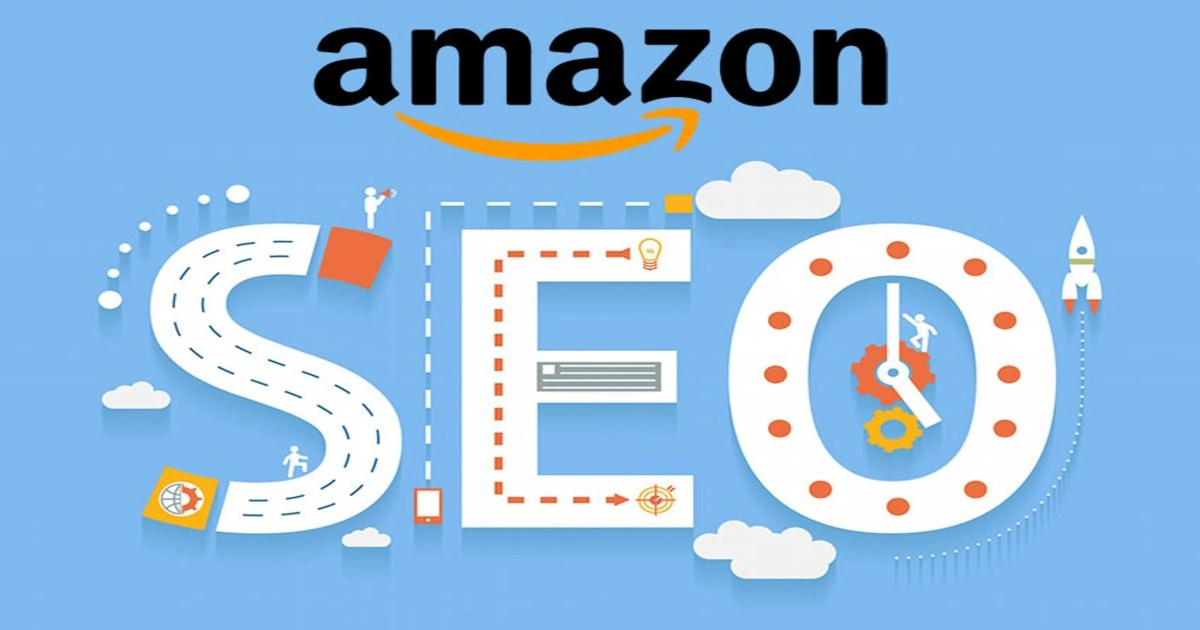
Amazon Search Engine Optimization (SEO) is a powerful tool that, when used effectively, creates a mutually beneficial situation for both sellers and buyers. By optimizing your product listings, you can increase your product’s visibility, boost sales, and help customers find the products they desire. In this guide, we will discuss:
- The fundamentals of Amazon SEO
- How Amazon SEO operates within the marketplace
- Strategies to improve your product rankings, including on-page and technical optimization
Amazon SEO Explained: Why Should You Care?
Amazon SEO refers to various strategies employed to enhance the visibility of your products and brand within Amazon’s search results. These strategies include conducting keyword research, incorporating relevant search terms into product titles and descriptions, and optimizing images and pricing to improve your organic search ranking. Additionally, technical SEO factors such as page speed and mobile-friendliness play a crucial role in enhancing user experience and search rankings.
Now, let’s delve into the intricacies of Amazon SEO and explore how you can improve your sales potential and reach more customers.
Understanding Amazon SEO: 5 Key Components
- Amazon Search Box: Customers search for products by entering keywords or phrases into the search box and browsing the results. They can also use the drop-down menu to select specific departments, such as Electronics or Home & Kitchen.
- Search Filters: Customers can refine their search results using filters like delivery date, customer reviews, and price. The Amazon homepage also features links to popular categories such as Best Sellers, New Releases, and Today’s Deals.
- Search Results Page: The search results page displays various product listings, allowing customers to compare prices, shipping options, and other factors.
- Amazon Sales Rank: Amazon’s Best Sellers list showcases the most popular products based on real-time sales data. The Best Sellers Rank indicates how well a product is selling within its respective categories.
- Sponsored Products and Advertising: Cost-per-click ads, such as Sponsored Products, can help your listings gain visibility, stand out from competitors, and capture customers’ attention.
7 Strategies to Improve Search Rankings and Increase Sales
- Perform Keyword Research: Identify the keywords and phrases customers use to find products similar to yours. Incorporate these keywords into your product titles, descriptions, and ads to drive sales. Use SEO tools like Amazon’s Product Opportunity Explorer to discover top search terms and trends.
- Optimize Product Titles: Use primary keywords in your product titles to create concise, informative, and enticing descriptions. Consider the customer’s perspective and include essential details such as product type, brand name, and descriptive attributes.
- Write Informative Product Descriptions: Expand on product features and benefits using secondary keywords in your product descriptions. Provide detailed information, such as materials, colors, sizes, and warranty information, to help customers make informed decisions.
- Use Bullet Points Effectively: Highlight key product features and benefits using bullet points. Focus on the product’s design, unique features, and potential uses to create a compelling and easy-to-read list.
- Utilize Back-End Search Terms: Add keywords to your product’s catalog data to improve search ranking. These keywords are not visible to customers but can still help your product rank for specific searches.
- Optimize Product Images: Use high-quality product images to showcase your product from various angles, highlight key features, and provide a clear representation of the item. Utilize alt-text to describe images and include relevant keywords for improved SEO.
- Adjust Product Pricing: Stay competitive by adjusting your product pricing based on market trends, competitor analysis, and cost calculations. Utilize Amazon’s Automate Pricing feature to automatically adjust prices across your inventory.
Technical SEO Factors to Boost Your Amazon Listing
While on-page optimization is crucial, don’t overlook the importance of technical SEO factors that can significantly impact your product listing’s performance.
- Page Perfomance: Ensure your product listings load quickly to provide a seamless shopping experience. Amazon favors fast-loading listings, as they contribute to higher customer satisfaction and increased conversions.
- Mobile-Friendliness: Optimize your product listings for mobile devices, as a significant portion of Amazon shoppers browse and make purchases using smartphones or tablets. Focus on creating a user-friendly mobile experience with easy-to-read text, clear images, and intuitive navigation.
In conclusion, mastering Amazon SEO is crucial for increasing your product’s visibility, reaching more customers, and boosting sales. By implementing both on-page and technical optimization strategies and continually refining your approach, you can create a winning formula for success in the competitive Amazon marketplace. Here are some additional technical SEO factors to consider:
- Structured Data: Although Amazon automatically generates structured data for your product listings, it’s essential to review and ensure the accuracy of this information. Properly structured data helps search engines better understand your product details, which can lead to improved search rankings.
- URL Structure: While Amazon controls the URL structure for your product listings, you can still influence it by creating a descriptive and keyword-rich product title. A well-structured URL can positively impact your listing’s search ranking and click-through rate.
- Indexing: Make sure your product listings are correctly indexed by Amazon’s search engine. Regularly monitor your listings for any indexing issues and address them promptly to maintain optimal visibility.
- Duplicate Content: Avoid duplicating content across multiple product listings, as this can negatively impact your search rankings. Ensure each listing has unique and relevant content tailored to the specific product.
- AMP (Accelerated Mobile Pages): Amazon supports AMP for some product listings, providing a faster and more streamlined mobile browsing experience. While you may not have direct control over AMP implementation, being aware of its potential impact on your listings’ performance is essential.
- Internal Linking: Internal linking is an often-overlooked aspect of Amazon SEO. While Amazon automatically generates related product links, you can still strategically incorporate internal links within your product descriptions and A+ content. By linking to complementary products or accessories, you can create a more cohesive shopping experience and potentially increase sales.
- Customer Reviews and Ratings: While not a direct technical SEO factor, customer reviews and ratings significantly impact your product’s visibility and credibility. Encourage customers to leave honest reviews by providing excellent product quality, responsive customer service, and, when allowed, using Amazon’s Request a Review feature. Positive reviews and high ratings can improve your product’s search ranking and click-through rate.
- Monitor and Adapt to Amazon Algorithm Updates: Amazon’s A10 (formerly A9) search algorithm is constantly evolving, with updates focusing on improving the customer experience and delivering more relevant search results. Stay informed about algorithm changes and adapt your SEO strategy accordingly to maintain optimal performance.
- Leverage Amazon’s Tools and Programs: Take advantage of Amazon’s tools and programs designed to help sellers improve their listings and reach more customers. Amazon Brand Registry: This program offers enhanced brand control, dedicated customer support, and access to powerful marketing tools like A+ Content and Sponsored Brands.
- Fulfillment by Amazon (FBA): Using FBA can improve your product’s chances of winning the Buy Box, increase eligibility for Amazon Prime shipping, and enhance your listing’s visibility and credibility.
- Amazon Early Reviewer Program: This program encourages customers to leave reviews for new products, helping you build social proof and credibility.
- A/B Testing: Perform A/B testing on various elements of your product listings, such as titles, images, and descriptions, to determine which versions resonate best with your target audience. Implementing data-driven changes based on A/B testing results can help you optimize your listings for improved performance.
- Localization and International Expansion: If you’re targeting customers in multiple countries or regions, consider localizing your product listings to cater to each market’s language, cultural preferences, and search behaviors. This approach can help improve your listings’ visibility and engagement in international markets.
- Stay Informed About Amazon SEO Best Practices: Amazon SEO is a dynamic and evolving field, with new strategies and best practices emerging regularly. Stay informed about the latest trends and techniques by following industry blogs, attending webinars, and participating in seller forums.
Analyze and Optimize Your Performance Metrics
Regularly monitor your product listings’ performance metrics to identify areas for improvement and track the success of your optimization efforts. Key performance indicators (KPIs) to focus on include:
- Conversion Rate: The percentage of visitors who make a purchase after viewing your product listing. A higher conversion rate indicates that your listing effectively engages and persuades potential customers.
- Click-Through Rate (CTR): The percentage of users who click on your product listing after seeing it in search results. A higher CTR suggests that your listing’s title, images, and pricing are appealing to potential customers.
- Session Length: The average duration of a user’s visit to your product listing. Longer session lengths may indicate that users find your listing informative and engaging.
- Bounce Rate: The percentage of users who leave your product listing without interacting further. A high bounce rate could suggest that your listing doesn’t meet user expectations or provide sufficient information.
- Sales Velocity: The number of units sold within a given timeframe. Higher sales velocity can improve your product’s search ranking and increase its chances of becoming a Best Seller.
By addressing both on-page and technical SEO factors, you can create a comprehensive Amazon SEO strategy that drives visibility, engagement, and sales. Stay proactive in monitoring and optimizing your product listings, and adapt to Amazon’s ever-evolving algorithm to maintain a competitive edge in the marketplace.
In conclusion, creating a comprehensive and effective Amazon SEO strategy requires a multifaceted approach that addresses on-page, technical, and performance optimization factors. By staying proactive, adaptable, and informed, you can maximize your product listings’ visibility, engagement, and sales in the competitive Amazon marketplace.
In addition to SEO, integrating Pay-Per-Click (PPC) advertising into your Amazon marketing strategy can help drive visibility, traffic, and sales for your products. Amazon PPC campaigns, such as Sponsored Products, Sponsored Brands, and Sponsored Display ads, allow you to target specific keywords, products, or audiences, ensuring your listings appear prominently in search results and on product detail pages. By combining SEO and PPC efforts, you can create a synergistic approach that maximizes your product’s reach and conversions. Monitor and optimize your PPC campaigns regularly to ensure you’re targeting the most relevant keywords, maintaining a healthy return on ad spend (ROAS), and making data-driven adjustments to improve performance. See how to make Amazon PPC Optimization in the article by link below:

